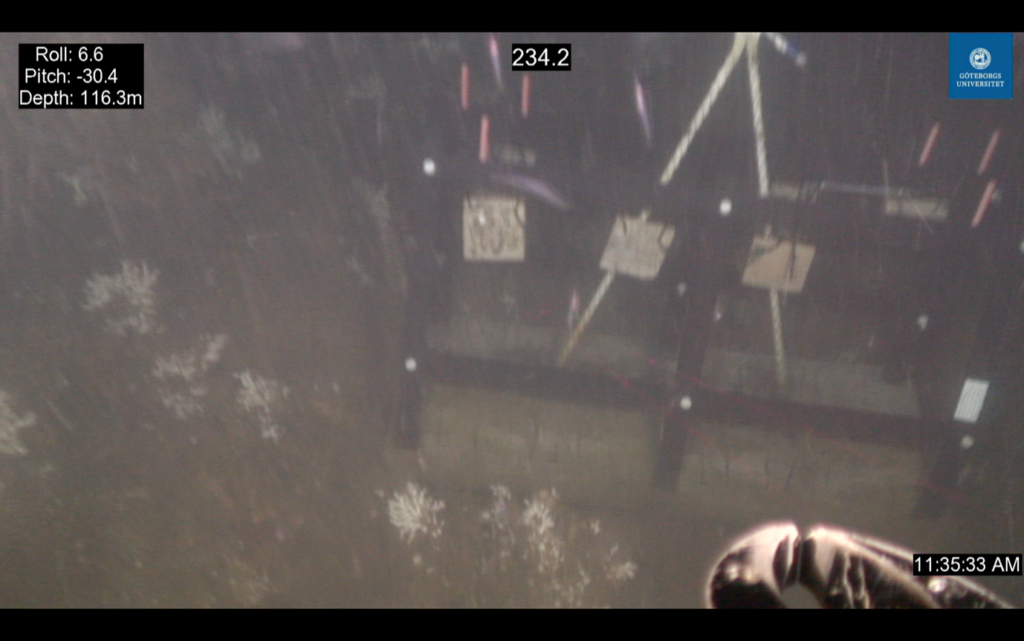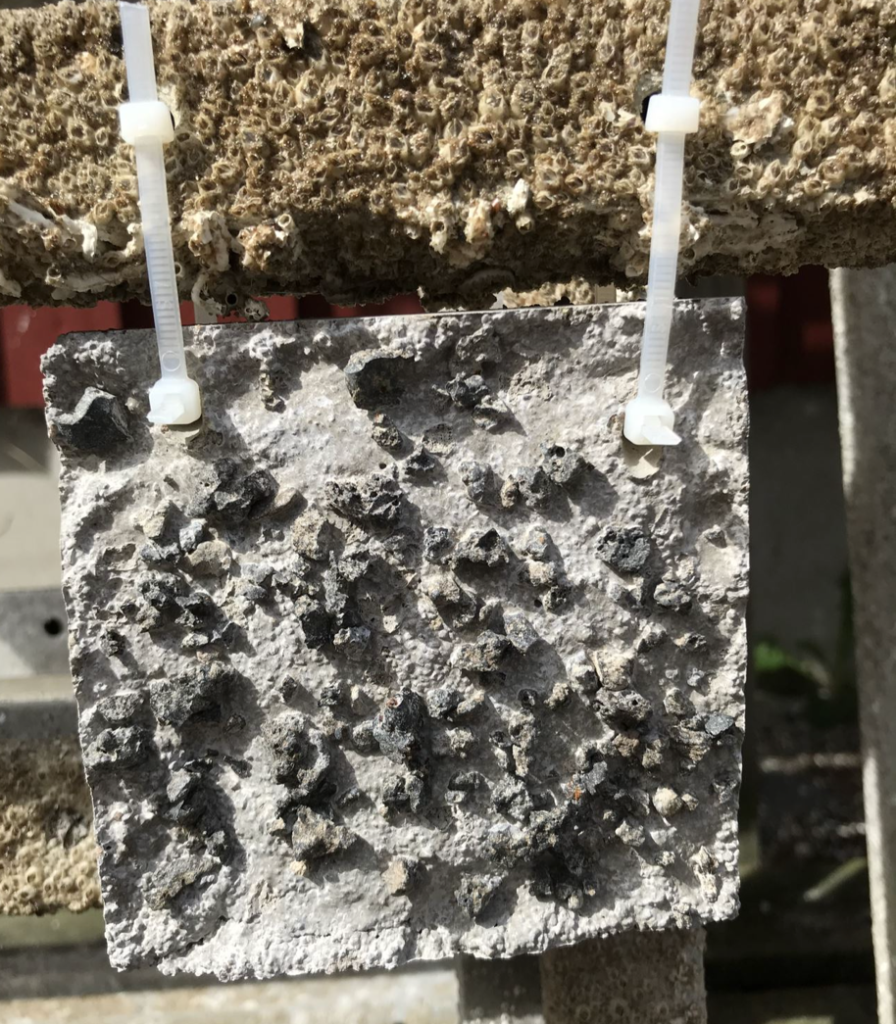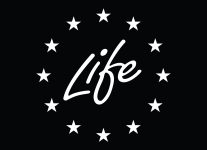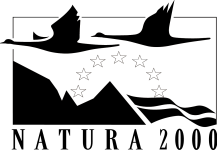For testing the suitability of different substrate types and structures for larval settling we placed several test settling panels out at Tisler reef in Norway. Oyster larvae and larvae of other calcifying organisms are known to prefer substrates with a pH around 9–10 (Sella & Perkol-Finkel 2015) for successful settling in comparison to industrial harbor concrete (pH 12–13). Here, we are testing concrete tiles of different mixtures and pH, to see which blends are preferred by Lophelia larvae and other reef associated fauna. One side of each panel is covered with pieces of metallurgical slag, which is a waste product of iron and steel production. The other side contains small regular holes which offers additional structure to settle. Many larvae are known to prefer to settle in small holes and crevices to be protected against predators during their early sessile phase. The slag’s main components are limestone and silica, it has previously been tested as substrate for tropical coral reef restoration. This will now be tested by us, to see if it can work for cold-water corals, too.
Reference
Sella, I. and Perkol-Finkel, S. (2015) ‘Blue is the new green–ecological enhancement of concrete based coastal and marine infrastructure’, Ecological Engineering, 84, pp. 260-272.

Foto: Roger J Johansson and Joel White. / Underwater images showing the deployment of a settling panel rack close to Lophelia pertusa colonies.






